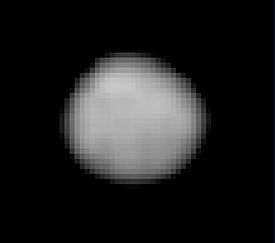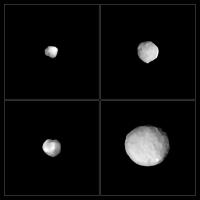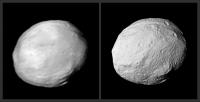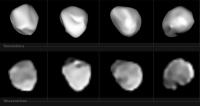Printable Version of Topic
Click here to view this topic in its original format
Unmanned Spaceflight.com _ Telescopic Observations _ SPHERE
Posted by: machi Jun 10 2014, 08:31 PM
Page: http://www.eso.org/sci/facilities/develop/instruments/sphere.html
With its first light successfully gathered I think that this instrument deserve its own topic.
This instrument is similar to the http://www.unmannedspaceflight.com/index.php?showtopic=7775 and its prime scientific objective is the discovery and study of extra-solar planets
(mostly giants, but for closest stars even super-earths are possible under very fortunate conditions).
Another objectives are proto-planetary disks, brown dwarfs, evolved massive stars, Solar System and extragalactic science.
SPHERE has three instruments:
- The Infra-Red Dual-beam Imaging and Spectroscopy (IRDIS) - NIR imager and spectrograph.
- The Integral Field Spectrograph (IFS) - NIR spectrograph.
- The Zurich Imaging Polarimeter (ZIMPOL) - visible/NIR imaging polarimeter.
There are four images from SPHERE which were http://www.eso.org/public/news/eso1417/ -
Image of Titan at 1.59 microns:
http://www.eso.org/public/images/eso1417b/
Images of Titan with polarimetric mode (and in visible light):
http://www.eso.org/public/images/eso1417h/
Dusty ring around the star HR 4796A:
http://www.eso.org/public/images/eso1417a/
A very low mass companion star to Iota Sagitarii from IRDIS (left image) and IFS (right image):
http://www.eso.org/public/images/eso1417i/
All images credit: ESO/J.-L. Beuzit et al./SPHERE Consortium
Posted by: Jackbauer Sep 7 2015, 06:38 PM
SPHERE maps the surface of Ceres !!
http://www.eso.org/public/images/potw1536a/
Posted by: Explorer1 Sep 7 2015, 08:50 PM
Wow! That's impressive. Albeit Dawn is already there... this would be a useful improvement for the other giant main belt asteroids?
Posted by: Floyd Sep 7 2015, 10:09 PM
Dawn provides ground truth for Sphere and Hubble images.
Posted by: ZLD Sep 8 2015, 02:59 AM
This is quite impressive. Anyone know if Pluto is on the docket for observation in the future? Would be very interesting to see it used on the most distant high resolution imaged object.
Posted by: TheAnt Sep 8 2015, 05:36 PM
Pluto would be rather small due to extra distance.
Though when seeing those images of Ceres, I think SPHERE could improve a lot on the best views we currently have of Pallas.
Hubble image below.
Posted by: Jackbauer Sep 8 2015, 06:20 PM
Hubble image below.
Image of Pallas by Gemini Planet Imager (GPI)
http://arxiv.org/pdf/1407.2301.pdf
http://imgbox.com/p03Trzqg
Posted by: TheAnt Sep 9 2015, 08:40 PM
Thank you for the heads up Jackbauer. =)
I can see the moire pattern, and so I agree that Pallas look quite featureless at that resolution.
Even so I find it interesting as the remaining large asteroid that have not been closely studied, and perhaps will remain so for quite some time due to the inaccessible inclined orbit. So telescope images might be our best bet for quite some time.
Posted by: Paolo Sep 11 2015, 06:22 PM
http://www.aanda.org/articles/aa/full_html/2015/09/aa26626-15/aa26626-15.html
Posted by: Gladstoner Jun 29 2018, 11:44 PM
More asteroids....
Clock-wise from upper left, 29 Amphitrite, 324 Bamberga, 2 Pallas, and 89 Julia:
http://www.eso.org/public/images/potw1749a/
4 Vesta:
http://www.eso.org/public/images/potw1826a/
6 Hebe:
http://www.eso.org/public/images/potw1725a/
Powered by Invision Power Board (http://www.invisionboard.com)
© Invision Power Services (http://www.invisionpower.com)



